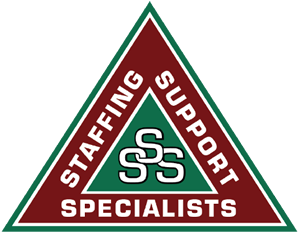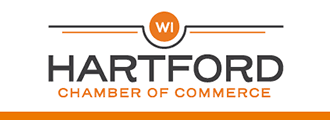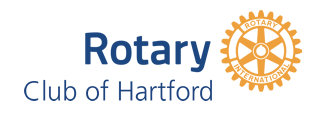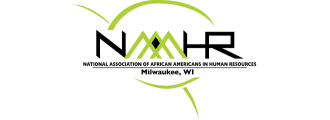In recent years, shifts in workplace dynamics— such as hybrid and remote work— have made maintaining employee productivity more challenging than ever. The good news is that employees genuinely want to perform well, but leadership needs to make a proactive effort. Maximizing workplace productivity makes sense for you and your employees.
At Staffing Support Specialists, we understand the importance of efficient staffing solutions and effective workplace practices. You can enhance productivity by providing your employees with the right tools, environment, and support.
This guide explores what employee productivity is, why it matters, and how you can effectively improve it to strengthen your business.
What is Employee Productivity?
It might seem like a silly question… but how do you define employee productivity? Being able to effectively boost workflow comes with understanding how you perceive productivity. Employee productivity measures how much work an individual employee completes in a given period. Unlike comprehensive productivity, employee productivity focuses on individual contributions.
This means productivity can be more complex to define because every role is different. A customer service representative’s productivity looks different from that of a warehouse employee or sales professional. So, what is employee productivity in your industry? And what are the key strategies to improve employee productivity?
Key Strategies to Improve Employee Productivity
1. Set Clear Goals, Expectations, and Priorities
Employees perform best when they understand what is expected of them. Clear goals help keep everyone on track and accountable. Plus, this will help keep everyone organized, leading to better productivity. When setting expectations:
- Provide Deadlines: Providing deadlines with context explaining why a task is urgent makes employees feel more in the loop.
- Outline Priorities: Outlining key priorities will help employees manage their workload efficiently.
- Set Goals Together: Setting goals as a team and as individuals can help create better cohesion at work.
- Document expectations: Provide a written follow-up that includes a concise summary of expectations and deadlines. This allows employees to have a tangible and visual reminder to refer to.
Additionally, utilizing organizational tools and platforms can help distinguish between urgent and important tasks, allowing employees to focus on high-priority activities that align with organizational objectives. And remember to make SMART goals.

2. Invest in Employee Development
Retaining talent will be a concern for companies at one point or another. Lack of development and/or lack of career advancement opportunities is one of the top three reasons why employees leave companies. Fortunately, there are ample ways to support employees and encourage retention. One of the best ways to do this is by investing in training and skill development:
- Create a career roadmap with employees by understanding their future goals and identifying the training or experience needed to bridge any gaps. Have regular conversations to discuss progress and offer guidance.
- Offer ongoing education opportunities, including conferences, online courses, and in-person workshops that align with career goals.
- Encourage career growth within your company to boost employee engagement and reduce turnover.
- Be open to discussions with employees about the continuing education topics they are interested in.
- Identify cross-training or project task force opportunities that align with developmental needs
3. Build a Culture of Trust
Trust goes both ways in the workplace. Employees should be able to trust that leadership supports their goals, communicates transparently, and respects their time. In return, they will feel heard and supported. This can lead to a more engaged and productive team. Remember:
- Be transparent about company developments.
- Respond to employee concerns promptly.
- Approve time-off requests quickly to show that you respect and support work-life balance. And if the request is denied, provide a valid and ethical reason.
- Allow employees autonomy to prioritize tasks on their own. Everyone has their own specific times during the day when they are the most productive. By allowing employees to maximize their time, you show employees that you trust them to understand what needs to be done, and by when.
4. Foster an Inclusive & Positive Work Environment
A supportive and inclusive workplace culture leads to increased employee satisfaction and productivity. As stated in a Modern Health article about inclusivity, “When employees feel like their voice is heard and their full self is appreciated, you’ll see an instant improvement in engagement.” Recognizing achievements, promoting open communication, and providing opportunities for professional growth are key components.

Learn more about Diversity and Inclusion: A Strategic Blueprint for Workplace Success.
5. Identify Productivity Barriers Before Investing in Tech
Technology can enhance efficiency, but it is important to pinpoint productivity challenges before adopting new tools:
- Assess where bottlenecks exist before implementing solutions.
- Choose technology that complements employee workflows, such as project management tools for office teams or scheduling software for IT staff.
6. Optimize the Work Environment
Say goodbye to old, uncomfortable office spaces. Businesses will have to invest more in creating a safe, comfortable, and ergonomic working environment. Creating an organized, well-lit, and ergonomic workspace minimizes distractions, increases comfort, and enhances focus, contributing to improved productivity.
7. Encourage Regular Breaks
Let’s be realistic, no one should work a 9-to-5 without taking a single break. Implementing structured work-rest cycles, breathing times, lunch breaks, etc., can enhance concentration and prevent burnout.
Your employees will feel more refreshed if allowed to have regular breaks without scrutiny (given they are on track with their work).

8. Promote Health and Well-Being
We should care about our employees inside and outside of work. In fact, employees in supportive, health-positive work environments are 2.5 times more likely to stay at their company long-term and 5.6 times more likely to trust their leadership. Here are some ways you can promote physical and mental health and well-being:
- Encouraging regular physical activity, including physical breaks.
- Providing resources such as Employee Assistance Programs (EAPs).
- Supporting open conversations about mental health and well-being.
- Implementing policies that support work-life balance.
9. Leverage Employee Productivity Software
Utilizing time-tracking platforms, productivity tools, and software can streamline workflows and reduce time spent on repetitive tasks, allowing employees to focus on more strategic activities.
However, avoid using tracking tools solely for micromanagement. Instead, leverage them to recognize high performers, identify disengaged employees, and provide support where needed.
The Link Between Employee Engagement and Productivity
Research from Deloitte mentioned that employees are 17% more productive than those who are disengaged. When employees feel valued, respected, and aligned with company goals, they are more motivated to continue working.
To foster engagement:
- Communicate the company’s mission and how employees contribute to its success.
- Distribute a regular engagement survey to understand historical compared to current engagement levels and to identify drivers in employee engagement
- Recognize and reward achievements regularly.
- Know how your team and individual employees want to be recognized for a job well done.
- Offer opportunities for career growth and further leadership development.
Measuring Employee Productivity
Your definition of employee productivity may vary from another organization, and that is okay. To track productivity, consider the following metrics:
- Goals Met: Evaluate how often employees meet set objectives.
- Performance Benchmarks: Use past data to set realistic performance expectations.
- Time Tracking (with transparency): Let employees know that time tracking will be spent on various tasks, projects, or clients to foster accountability and manage workloads.
- Peer and Self-Reviews: Encourage feedback from coworkers, managers, or self-assessments on an employee’s collaboration, communication, and impact on team projects.
Productivity Pays Off
Improving employee productivity requires time, effort, and investment, but the payoff is amazing. A motivated, engaged workforce leads to higher performance, innovation, and ultimately, increased revenue.
By implementing these strategies, you can create an environment where employees thrive, boosting both individual success and overall business growth. Now is the time to refine your approach and maximize workplace productivity.












